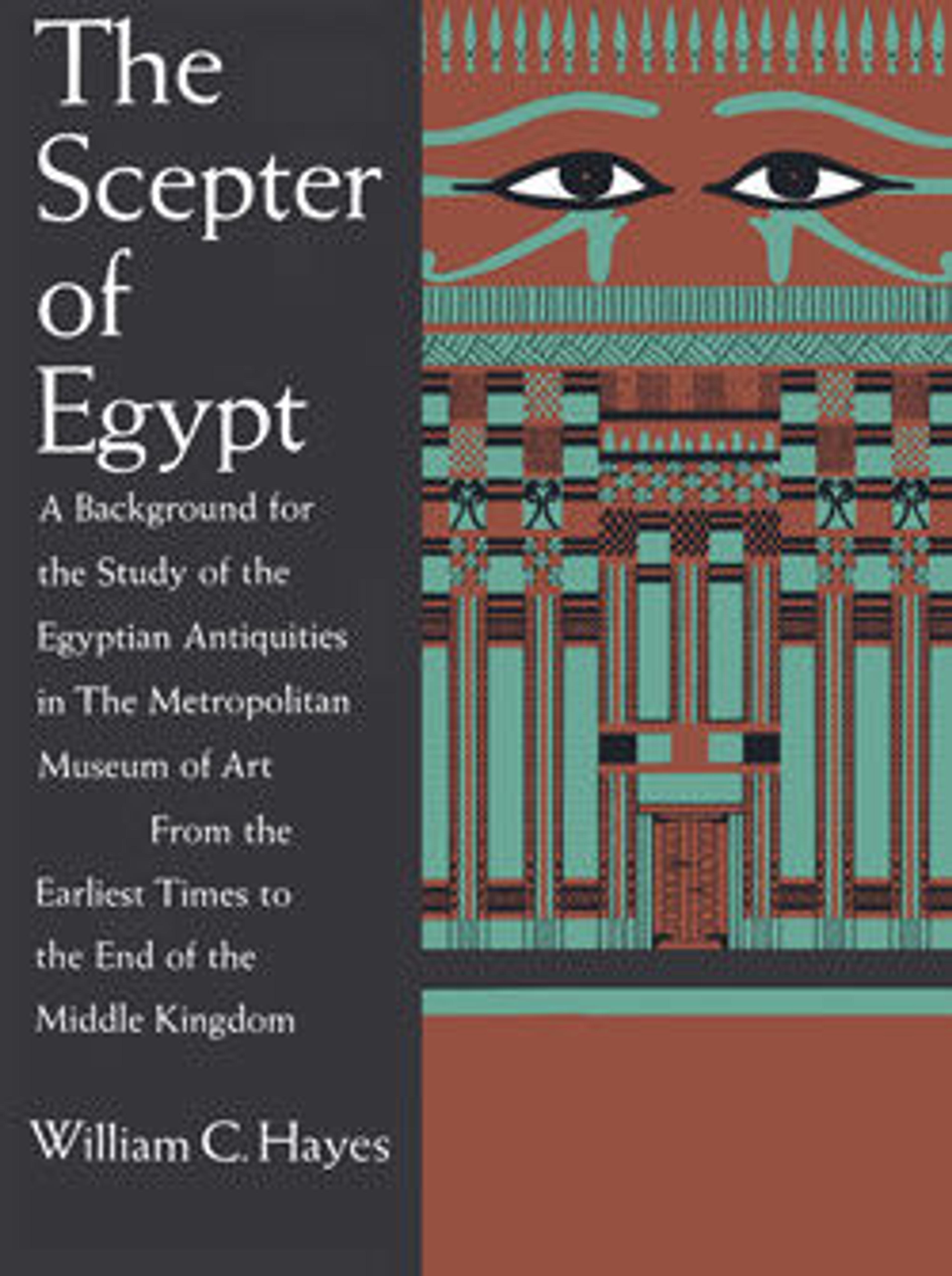Seated Statue of King Menkaure
Menkaure, son of Khafre and grandson of Khufu, built the Third Pyramid at Giza. Unlike the First and Second Pyramids of his father and grandfather which were covered in white limestone, Menkaure planned to case his pyramid in granite. This remained unfinished at his death and was never completed. His pyramid complex was excavated by a joint expedition of Harvard University and the Museum of Fine Arts, Boston, in 1908.
This unfinished statuette of Menkaure was found in a sculptor's workshop associated with the valley temple of his pyramid. It was one of fourteen statuettes of the king found there, all unfinished and in various stages of the sculptural process. It depicts the king in the traditional pose, seated with his left hand flat, palm down on this thigh; his right hand, here broken off, would have been in a fist. The feet of the statuette and the front part of the base on which they rested were destroyed as well. The king is seated on a blocklike throne that, when complete, would have been carved with the sematawy symbol, which represents the unity of Upper and Lower Egypt. He wears the nemes headcloth and false beard, and traces of the uraeus can be seen on the brow.
The statuette is made of a good quality hard limestone and still shows traces of the preliminary blocking-out of the figure, which have been partly obscured by the initial polishing of the surface. The musculature of the torso has been indicated and the statuette shows the outlines of the square mature face of Menkaure displayed in the large statues of greywacke and alabaster found elsewhere in his valley temple.
This unfinished statuette of Menkaure was found in a sculptor's workshop associated with the valley temple of his pyramid. It was one of fourteen statuettes of the king found there, all unfinished and in various stages of the sculptural process. It depicts the king in the traditional pose, seated with his left hand flat, palm down on this thigh; his right hand, here broken off, would have been in a fist. The feet of the statuette and the front part of the base on which they rested were destroyed as well. The king is seated on a blocklike throne that, when complete, would have been carved with the sematawy symbol, which represents the unity of Upper and Lower Egypt. He wears the nemes headcloth and false beard, and traces of the uraeus can be seen on the brow.
The statuette is made of a good quality hard limestone and still shows traces of the preliminary blocking-out of the figure, which have been partly obscured by the initial polishing of the surface. The musculature of the torso has been indicated and the statuette shows the outlines of the square mature face of Menkaure displayed in the large statues of greywacke and alabaster found elsewhere in his valley temple.
Artwork Details
- Title: Seated Statue of King Menkaure
- Period: Old Kingdom
- Dynasty: Dynasty 4
- Reign: reign of Menkaure
- Date: ca. 2490–2472 B.C.
- Geography: From Egypt, Memphite Region, Giza, Pyramid Complex of Menkaure, Valley Temple: Sculptor's workshop, Harvard-Boston MFA excavations, 1911
- Medium: Indurated limestone
- Dimensions: H. 20 cm (7 7/8 in.)
- Credit Line: Rogers Fund, 1937
- Object Number: 37.6.1
- Curatorial Department: Egyptian Art
More Artwork
Research Resources
The Met provides unparalleled resources for research and welcomes an international community of students and scholars. The Met's Open Access API is where creators and researchers can connect to the The Met collection. Open Access data and public domain images are available for unrestricted commercial and noncommercial use without permission or fee.
To request images under copyright and other restrictions, please use this Image Request form.
Feedback
We continue to research and examine historical and cultural context for objects in The Met collection. If you have comments or questions about this object record, please contact us using the form below. The Museum looks forward to receiving your comments.
